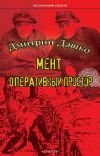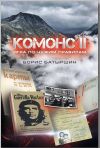Текст книги "The org board. How to develop a company structure"

Автор книги: Александр Высоцкий
Жанр: Малый бизнес, Бизнес-Книги
Возрастные ограничения: +12
сообщить о неприемлемом содержимом
Текущая страница: 4 (всего у книги 17 страниц) [доступный отрывок для чтения: 4 страниц]
Chapter 6
Seven basic functions
As already mentioned, I’ve searched for a long time for the answer to the question: “What functions does my company need to have, and how should they relate to each other?” None of the management textbooks that I read gave me an answer to these questions. It wasn’t until I came across The Organizing Board, published in 1965 by L. Ron Hubbard, that I felt I found something worthwhile. In his works, he described the exact sequence of functions that organizations must execute in order to flourish and expand. The idea of a universal system that can fit any business may seem strange. But don’t be so quick to jump to conclusions.
In the field of human interaction, there are certain principles to follow. Earlier, we reviewed the conditions of exchange. If one knows the condition of exchange he is in and understands the laws associated with that condition; he can better control the exchange better. Applying the principles of exchange requires common sense, but the principles themselves are invariable regardless of a person’s education level. These principles represent a law of interpersonal relations. Similarly, Newton formulated the law of universal gravitation, but objects had been falling even before that law was put into words. Moreover, people were well aware of gravity long before Newton. What he described and brought to light simply provided a precise understanding of the phenomenon. It allows people to consciously use this observable fact and accurately predict the behavior of physical objects influenced by gravity.
In the same way, the organizing board is a formula that describes the laws of any organization. Knowing these laws permits one to understand and better predict the actions of a group of people. Just as Newton's laws allow engineers to calculate the motion of material objects, L. Ron Hubbard’s organizing board enables executives to weigh the activities of an organization and how they relate to its VFP. Naturally, application of any law requires its understanding, as well as common sense.
The organizing board consists of seven main functions. Each of these functions produces its own VFP and, successfully producing these seven VFPs, achieves the company’s overall VFP. These seven functions end up constituting seven different divisions. Many of our clients who’ve implemented an organizing board, use “branch” or “office” instead of "division," especially those who’ve already used “division” and it holds a different meaning. However, it also makes sense to use the original term "division," as in that case your employees will not have to differentiate between words when referring to the same subject while studying materials on this topic, including this book.
Divisions are arranged in a particular order – they reflect the optimal sequence of actions for the successful operation of an organization. They each have their own number that goes from left to right, except Division 7 which appears first. Let’s take a look at these functions in sequence, from left to right. This chapter will cover only the general sequence of functions and their correlations. Each division, with its functions and products, will be analyzed in more detail in subsequent chapters.
Division 7, the Executive Division, is where the entire flow of production begins. Here you’ll find the roles that determine the overall goals of the company – such as the owner, the Board of Directors, or other high-level senior executives. Ideas regarding how the company will operate, all major plans, methods of production, and marketing strategies are created and developed here. The success of the entire organization is determined by the success of the ideas that originate in this division. The Executive Division does not directly perform the technical tasks, but it sets the course of action for the rest of the org board. As this division is above all the others, on one hand, its VFP can simply be the company's success. On the other hand, the VFP is, "the product of the entire company."

The next function is Division 1, the «Establishment Division,» which refers to the establishment of the organization. An organization consists of people who interact with each other to provide a certain VFP. Therefore, establishment consists of effectively distributing functions among employees and adding new people to the organization. To actually establish an organization, you need to hire productive people who quickly get through the initial training, provide them with everything necessary to produce, and ensure that the system for employees and inter-department interaction operates effectively. When this division is weak, it becomes impossible for the company to grow. Here are some basic signs to look out for:
• Executives complain about a lack of productive people.
• Some employees are overloaded, which hinders growth.
• Increased chaos comes with an increased number of employees.
This division is called the "Establishment Division" because it takes responsibility for company development from an organizational point of view. Simply put, this is the area of the company – which divisions and what sequence – employees will be hired in and established at their jobs.
If we view the organization as parts working within a single process, it would be strange to hire an employee based on the requests of division directors, rather than which position is prioritized to fulfill company growth. At any given moment, there can be bottlenecks in the flow of production, and if the hired employees are solely geared to meet the wishes of division heads, mistakes are inevitable. Ideally, the Establishment Division has an accurate idea of how the company should be organized, which functions produce which products, and carefully monitors the flow of production. When weaknesses are detected – areas that stymie the flow of production – this division handles it by either increasing employees’ productivity, or by hiring the missing personnel. This is more than what is customarily required of HR specialists. This function includes not only hiring and establishing employees on the job, but also monitoring, analyzing, and improving the company’s production processes, as well as increasing its productivity.
After the "idea" and "establishment", the next function is Division 2, the "Marketing Division[14]14
In the original works it was referred to as the, “Dissemination Division”.
[Закрыть]". This division ensures that the organization has sufficient resources to successfully operate and develop. It entails the functions of promoting products to customers, creating promotional materials and sales tools, sales, and maintaining the customer database.
For example, in an auto shop, this division promotes services through magazines, fliers, and signs that attract clients. Here they greet and sign up a client for services, as well as promote and sell additional services to him. It does not matter what the company’s VFP is, this function must be present in the production flow. Even in a self-service Duane Reade store that has no sales associates, sales are still carried out by the Marketing Division. This function is accomplished mainly through promotion and merchandising[15]15
Merchandising: part of the marketing process that determines the method of selling merchandise in a retail store. Merchandising directs the selection and location of goods in a store, ways of displaying them, and provides instructions and promotional materials for them.
[Закрыть].
Generated revenue should be used efficiently, which falls under Division 3, the “Finance Division[16]16
In the original works it was referred to as the, “Treasury Division”.
[Закрыть]". This division manages all of the company's assets[17]17
An asset is anything that you can use to create profit: money, materials, merchandise in stock, equipment, and company property.
[Закрыть]. The division handles: the collection and accounting of all income; planning and carrying out all expenditures; controlling the use of materials, goods, and property; and the reporting and accounting of all finances and assets. This does not mean that solely the Director of Finance solely the decisions on how to distribute income – this falls to the division heads. Each week, they’ll create a proposal for the allocation of funds that must also be approved by senior management before the bills are paid. Yet, it’s the Finance Division that has to prepare all the data for the board and ensure that the proposal is done properly. These functions are much broader than straightforward accounting or tax preparations. In a small business, the majority of these functions falls on the shoulders of the executives. The chief accountant assumes only some of the division’s work – accounting and reporting. The main purpose of Division 3 is to control and monitor all the money the company earns, then intelligently direct the revenue, to expanding production and VFP exchange.
Next is Division 4, the "Division of Production[18]18
In the original works it was referred to as the,“Technical Division”.
[Закрыть]". This is where the actual product of the company is produced. In the case of the auto shop, this division includes the work area, car lifts, spare parts, materials, and the mechanics themselves – in short, all that is necessary to get the job done. For a retail company, this division would include suppliers, the warehouse, packaging, transportation, and, possibly, customer service. In a printing company this division would include: preparing layouts, making printing plates, servicing the equipment, purchasing the materials, the printing jobs themselves, and packaging and shipping to the customer.
Once Division 4 finished the product, it’s necessary to evaluate the results – does it meet quality standards and what needs to be improved? This is the job of Division 5, the" Qualification Division.” It is responsible for maintaining and improving the company's ability to produce a specific VFP. For example, in Di Fara Pizza, which I mentioned earlier, the function of Division 5 is only done in regards to the quality of pizza. But the VFP of a pizza shop includes not just the food, but also the service in the restaurant, the cleanliness of the shop and restrooms, the availability of napkins on the tables, and much more. Neglecting the quality of the components that make up the VFP leads to problems in the company’s exchange with its clients. Typically, people start businesses with good intentions. They want to provide customers with a high-quality product, but if quality control to monitor the company is non-existent, the operation of the company degrades. The decay of the product’s quality inevitably results in misplaced efforts to "push" the product onto the customer, handle hiccups, and "clean up" the company’s name.
I’ve come across the idea that it’s easier to push a low-quality product for the easy money. But the lower the quality of the product, the more difficult it is to achieve financial success. Perhaps lowering the quality allows some savings on product production, but this will translate to greater losses in all other divisions. Working for a company that provides a mediocre product is not prestigious; this increases workload and costs for the Division 1 tasks. Advertising and sales for a bad product are also difficult, which increases the costs of Division 2, and so on. Just as employee turnover is conducive to financial losses, the loss of quality results in significant financial losses.
The easiest way to find out the quality level of any product is to ask the customer. How often do you get asked, as a customer, about a product’s quality, with a sincere desire to hear out your response? If all companies regularly took an interest in their customer’s opinion on what needs to improve, executives would gain a lot of useful information. They could then use that information to help them increase the value of the company's product, thereby strengthening the exchange with customers. Once discrepancies in quality are found, they should be corrected. Then, the relationship with the customer should be handled. Finally, the cause of the initial errors should be identified and eliminated. To thoroughly handle a quality issue, one has to either improve the skills of certain employees or change the manner in which work is organized. These functions are routinely performed by Division 5, which improves the product on an ongoing basis.
The last is Division 6, the "Division of Public Relations[19]19
In the original works it was referred as the, “Public Division”.
[Закрыть]". “Public” refers to the people in some area or those who can be grouped by a common characteristic. In business, we consider our “public” to be those who are connected with our field of activity, primarily those who could potentially become our clients. After a high-quality product is produced, the next step in the production flow is to make it widely known to the public and to cultivate the grounds for further expansion.
Mainly, it’s creating a positive image for the company in the eyes of the public. It’s offering special products that attract a large number of new customers, the creation of partnerships with non-competing companies, and organizations to help get more new customers.
Division 6 may seem to overlap with Division 2 (the Marketing Division), which is responsible for promotion. This is not the case. The creation of a public image and promotion are two very different functions and produce distinctly different results. The differences are quite distinguishable. If you want more customers to walk into your store, you create an attractive well-lit shop window, hang eye-catching signs, and post inviting fliers. This type of promotion costs money, and you can accurately assess the change in customer flow after implementing them. Meaning, you can calculate whether your investment in this promotion paid off. If all goes well, customers come in, love the product and begin to recognize your brand. If they have a positive experience in the store, thanks to the great job of a cashier in Division 3, sales assistants on the floor from Division 4, and quality control specialists from Division 5, the customer is left with a positive impression. But the number of people who were left with a positive impression towards the store is always less than the number of buyers served, as no one has yet been able to achieve 100 % quality.
The Division 6 task to form an image in the eyes of the public is mainly to create that positive attitude for a huge number of people that could potentially visit the store. It doesn’t include those who have already been to the store. To achieve that, Division 6, for instance, organizes projects that the public considers important and positive and then publishes articles in the local press.
If these actions are done regularly, the operation of all other divisions on the org board will become more effective. The Executive Division (7) will find it easier to interact with the powers that be; the Establishment Division (1) will find qualified employees faster; the Marketing Division (2) will see that promotion become more effective as people pay greater attention to advertising from a more socially positive company. It will be easier for the Finance Division (3) to collect money from their customers and obtain payment terms from creditors, and the Divisions of Production (4) and Qualification (5) will have increased volume and quality of production due to those actions. The work of Division 6 will be described in more detail in the corresponding chapter. For now, I only want to point out that the difficulty of obtaining new customers and, therefore, the price of the expansion, depends on the success of this division.
It does not really matter what product a company provides to its customers. To succeed, it is necessary that each of these seven functions is being performed. One company may primarily use internet promotion while another will utilize outdoor advertising. It all depends on the product and the public. The size of the company will also determine the number of people required to perform each function. For the promotion of an individual retail store, it’s sufficient to annually update its listing in directories and change the window displays several times a year. These can be carried out by an employee who has other responsibilities. A major furniture manufacturer; however, will need a whole team of people that include an analyst, a designer, and a mass media expert. Regardless of the size and line of business, this function is necessary.
Even starting entrepreneurs, such as a lawyer without a firm, has to do each of these seven functions in order to achieve success. He needs to plan his own activities, organize his workflow, promote and sell his services, service his clients, improve his professional skills, and create his image. If he overlooks any of these functions in his operation, it will become a bottleneck to his growth. The difficulty is that there is no one person who is equally interested in doing all of these functions. A good technical engineer is rarely a good salesperson, just as a talented salesperson is rarely an expert in finances. In order to create a thriving company, you need people with different talents, and then the palette of these seven colors will allow you to create a masterpiece.
You’ve probably seen the business where it is an association of professionals, and each of them performs several org board functions. A common example is a real estate company. Often, they are organized where an executive is primarily responsible for the Division 7, and the majority of employees are real estate agents. Then, each of them searches for properties to sell, buyers for existing properties sells their own services, performs all technical aspects of the business (showing and closing on properties). So each of them performs several org board functions. Interestingly, in these types of businesses, employees learn to do their job well and become familiar with the market, then go and open a competing company. The reason is obvious – each one of them already is a separate org board.
Conversely, in companies where you have a team where each member competently does his job, such business "offshoots” rarely happen. If a person performs virtually all the functions of the org board, it is quite logical that he becomes a separate org board. Nothing is preventing real estate companies from dividing up these functions: some employees do the promotion, others sell services, others perform showings and close deals, etc. In this case, it will be much easier for the executive to manage the company, attract and train new employees and, if necessary, replace them.
Please note, that Divisions 1 and 5 are higher on the org board than the others. This indicates their special roles in organizing the company’s activity. Division 1 creates the company, while Division 5 ensures its improvement. Most small businesses consist of Divisions 2, 3, and 4, as it is those functions that are vital for the company to even start operations. In my experience of implementing managements tools in over 500 businesses, I’ve found, that these divisions are usually the strongest. The rest are practically absent. If there is no Division 5, the company could expand, but expansion will result in an overall decline in efficiency. Profit per employee would markedly go down with company expansion. If there is no Division 1, the company will not expand at all. If there is no Division 6, the expansion will take a lot of effort and will be too expensive, so the growth rate will be limited.
The sequence of org board functions also determines the sequence of planning the divisions’ activity. An overall plan is developed by the Executive Division, allowing Division 1 to plan out the sequence in which posts and departments must be created and developed. Then, the Marketing Division plans what products will be promoted and provided to what types of potential customers. This enables the Finance Division to create plans for managing money and other assets of the company, and the Division of Production to plan for producing the product. Errors in this sequence lead to considerable difficulties. It is impossible to create an effective plan to purchase merchandise if there are no plans for promotion and sales. It is difficult to deliver orders if there is no plan to finance the procurement.
In my experience as a consultant, I’ve come across some glaring problems. For example, one retail company was buying its stock based on sales volume, even though the department responsible for sales had no plans on how to sell that merchandise. An insurance company had done a beautiful, large-scale promotional campaign for their new service. But when clients started contacting local branches of the company, there were no contract forms that related to this service. As a result, potential clients who became interested in this service went to their competitors. The company spent a considerable amount of money to, essentially, advertise the services of their competitors.
In 2008, the lack of planning on the part of Division 3 in a company supplying metal to industrial enterprises, along with the worldwide decline in the price of metal, resulted in the loss of half of their current assets. Everything was going along as usual – the Marketing Division had signed supply contracts with the current prices, and the Division of Production continued to make purchases from suppliers at current prices, as well. But the manufacturer took over two months to deliver, and during that time the price of metal fell more than 20 %. As a result, the company lost a significant part of their current assets because Division 3 was not planning out its asset preservation activities. Also, the plans of the divisions were not aligned with each other.
The way the divisions are numbered on the org board represent the completeness of the production flow. It starts in Division 1, continues through to Division 6, and a new cycle begins again in Division 1. Due to the work of Division 6, the company gains more and more influence in the market. Division 1 expands the organization, and so on. Division 7 is positioned above the production flow and performs management functions.
We could say that an org board is a spiral. Its loops are expanding if production in all divisions increases and vice versa. If production goes down, the loops’ shrink. Most organizations can expand for a long time within the framework of one org board. Others, for instance, hotels and restaurants, need to expand by "cloning" their org board and opening new enterprises.

Large companies usually consist not only of one org board, but are a collection of org boards on several levels. For example, a chain of supermarkets combines org boards of different levels. At the very bottom, there are the supermarkets themselves. On the next level it’s the regional management offices. At the top, there is a company that manages the entire network. Each level has its own org board. While the VFP of a supermarket is a selection of merchandise provided to customers, the VFP of the regional management is successful supermarkets in the region, and the VFP of the chain management is a successful operation of all the regions. In my work, I have come across an organization that had five levels of org boards. This is a company with several supermarket chains, processing factories, and commercial enterprises. But the org boards for all these levels are similar in their functions, which is convenient for management. Any employee, in any part of the company, at any level has a very good understanding of how the work is organized in other areas and in the company. Org boards of holding companies will be discussed in a separate chapter.

Envision your company as a logical and natural sequence of these seven functions; you now have the ability to see problems and possibilities, to predict the future, and consciously control its development.
The functions of the divisions are based on natural laws, meaning they must be performed. If the executive has not delegated these functions to his employees, it will cause an inevitable overload for him or will create additional work for those employees who need these functions. If the executive has not appointed anybody to be responsible for the functions of Division 1, all the problems of looking for and establishing new employees on their posts will either become his duty, or the division heads will start hiring their own employees. If he has not given someone the responsibility for Division 2, he will be the only one responsible for the company's income. After all, the executive is responsible for the entire VFP of the area he overlooks. In the case of the top executive the VFP of an entire company and all divisional VFPs necessary for its production. Even if a company does not have and never had an org board covering all seven functions, the functions themselves will not disappear. Each of the functions omitted in a company’s structure will become the executive’s responsibility, or it will be done by the most responsible employees. This occurs regardless if no one recognizes it as a specific duty. A simple example, many small companies could significantly increase their popularity if they, from time to time, published an article about their products, price changes, and good reviews on their website. Thanks to modern technology, this type of work is now is as simple as posting on social media. But due to the fact that there is nobody in charge of this function, and the executive is loaded with work, the website gradually becomes an online tombstone. It has only the information that initially posted. From time to time, some employee publishes some random tid bit on the website, but it’s unorganized and impossible to manage. In this situation, the website will be updated only when the executive gets around to it.
Not being aware of the whole array of functions in an organization, the executive is trying to be a "one-man band," and his few employees, even when they feel things are going wrong and want to help, can't provide any significant support. It is impossible to delegate to someone a function that you don’t even know exists. I am also sure that just by studying this brief overview of the seven basic functions you already saw the ones that need to be delegated to your employees. Read the book to the end, and you will understand how to go about doing that.
Внимание! Это не конец книги.
Если начало книги вам понравилось, то полную версию можно приобрести у нашего партнёра - распространителя легального контента. Поддержите автора!








































